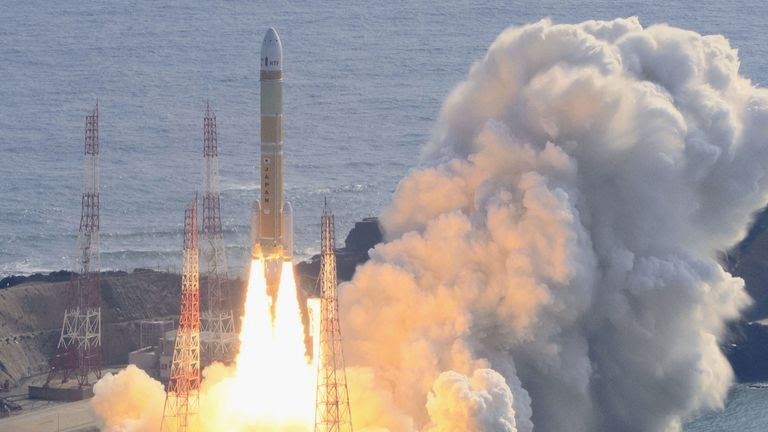Japan’s space agency, JAXA, achieved a significant milestone as its flagship H3 rocket successfully reached orbit in its second test, marking a crucial turnaround after a disappointing debut launch last year. The H3 rocket, carrying two small observation satellites, lifted off from the Tanegashima Space Center in Kagoshima Prefecture, demonstrating Japan’s resilience and determination in the competitive arena of space exploration.
The launch represents a pivotal moment for Japan, reaffirming its status as a major player in the global space race. After encountering setbacks during its maiden flight in 2023, which ended in failure due to an anomaly in the rocket’s propulsion system, the successful deployment of the H3 rocket underscores Japan’s commitment to overcoming challenges and advancing its space ambitions.
The H3 rocket is a next-generation launch vehicle developed by Mitsubishi Heavy Industries and JAXA, designed to enhance Japan’s capabilities in delivering payloads to space more efficiently and cost-effectively. With a focus on reliability and versatility, the H3 rocket aims to cater to a wide range of missions, including satellite deployments, lunar exploration, and interplanetary missions in the future.
The successful orbit insertion of the two observation satellites, outfitted with advanced imaging technologies, opens up new possibilities for scientific research, Earth observation, and commercial applications. These satellites will contribute to various fields such as environmental monitoring, disaster management, agriculture, and urban planning, furthering Japan’s efforts in leveraging space technology for societal benefit.
Moreover, the triumph of the H3 rocket test bolsters Japan’s position as a reliable partner in the international space community. Collaborative ventures with other space agencies and commercial entities are expected to flourish, fostering innovation and knowledge exchange on a global scale. Japan’s commitment to peaceful exploration and cooperation in space is evident through initiatives like the Artemis Accords, aimed at promoting sustainable exploration and utilization of lunar resources.
The successful launch of the H3 rocket also serves as a source of inspiration for Japan’s burgeoning space industry and the next generation of scientists, engineers, and astronauts. It underscores the importance of perseverance, innovation, and collaboration in overcoming obstacles and pushing the boundaries of human achievement.
Looking ahead, Japan’s space endeavors are poised for further advancements, with plans for ambitious missions including lunar landings, asteroid exploration, and contributions to international space exploration initiatives. The H3 rocket’s success sets a solid foundation for these endeavors, propelling Japan towards new frontiers in space exploration and cementing its status as a leading space-faring nation.
In conclusion, Japan’s achievement in launching the H3 rocket to orbit signifies a triumph of resilience, innovation, and determination. It showcases Japan’s prowess in space technology and its commitment to contributing to the peaceful exploration and utilization of outer space for the betterment of humanity. As Japan continues to chart its course in space, the successful deployment of the H3 rocket heralds a new era of possibilities and opportunities in the quest for knowledge and discovery beyond Earth’s boundaries.






